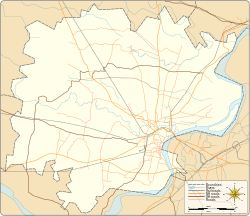| Dashashwamedh Ghat | |
|---|---|
 | |
| Religion | |
| Affiliation | Hinduism |
| District | Varanasi, Kashi region |
| Location | |
| Country | India |
| Coordinates | 25°18′25.808″N83°0′37.211″E / 25.30716889°N 83.01033639°E |
Dashashwamedh Ghat is a main ghat in Varanasi located on the Ganges River in Uttar Pradesh, India. It is located close to Vishwanath Temple. There are two Hindu legends associated with the ghat: according to one, Brahma created it to welcome Shiva, and in another, Brahma performed 10 Ashwamegha Yajna, Dasa-Ashwamedha yajna .
Contents
Initially construction started by the Raja Dushasan Shah, raja of Dhaudharh (bihar) in 1569 and then by the Maratha kings , the present ghat was built by Peshwa Balaji Baji Rao in 1748. A few decades later, Ahilyabahi Holkar, the Queen of Indore, rebuilt the ghat in 1774. [1]




